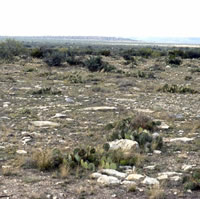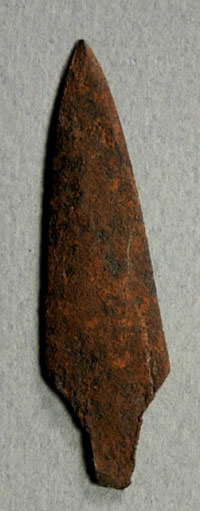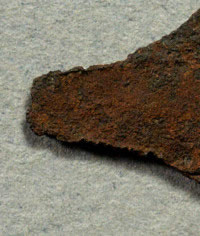Pecos Campsite
The desert lands of west Texas were home to hundreds of native groups in both prehistoric and historic times. At a small site (41CX209) in this broad expanse between mesas in the Pecos River valley, Native Americans camped, made chipped stone tools, and perhaps hunted and gathered plants.
Archeologists from Texas A&M university, surveying the area in advance of construction of the All-American oil pipeline in 1984, found a quantity of chert flakes, scrapers, and a nodule of red ocher. They also found a metal arrow point and what appeared to be a small hearth. While we can’t know whether all the materials were left by the same group, we do know that native peoples produced chipped stone tools well into the Historic Period, even while they began using metal points and knives.
As early as the 1600s, native peoples in Texas could obtain metal items and scrap iron from the Spanish, French, and Americans to make arrow points to tip their weapons. They learned to use chisels and files to cut and sharpen triangular-bladed points from items such as barrel hoops and gun barrel fragments. At the same time, large trade companies, cutlery firms in England, and blacksmiths on the frontier began manufacturing metal arrow points in large quantities specifically for trade with or gifts to the Native Americans.
Researchers studying metal points have found it difficult to distinguish points made by native peoples from those made by professionals. Some native toolmakers became quite skillful; learning to emulate the shape and style of professionally made points.


